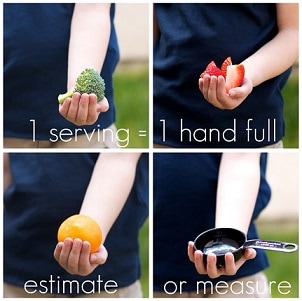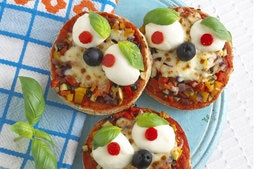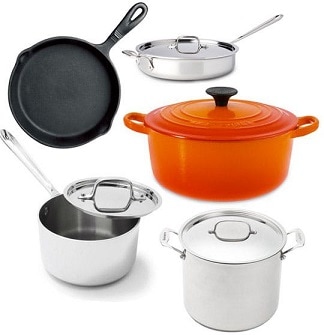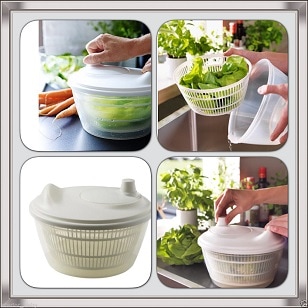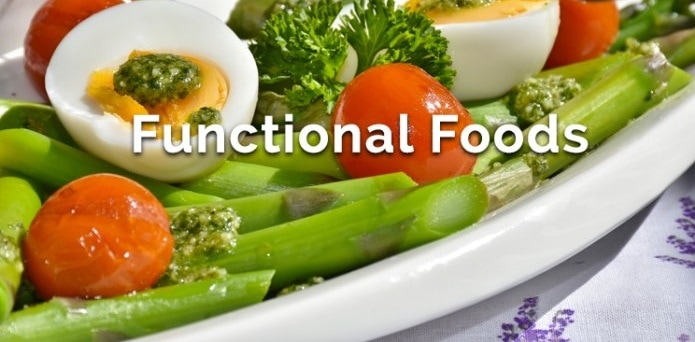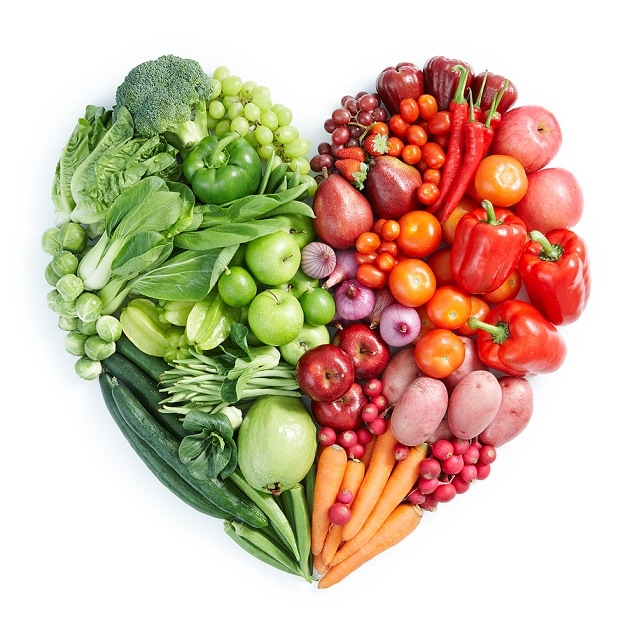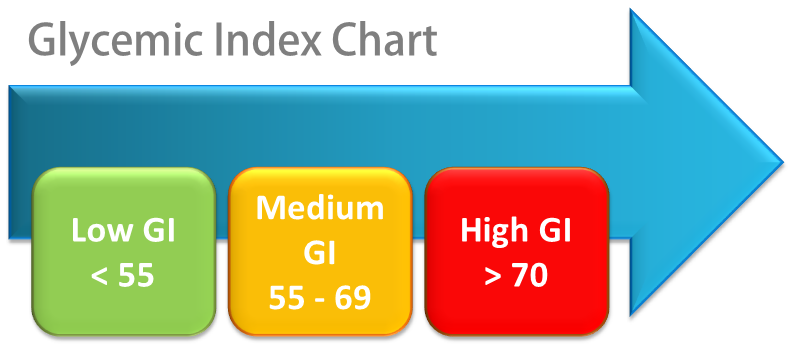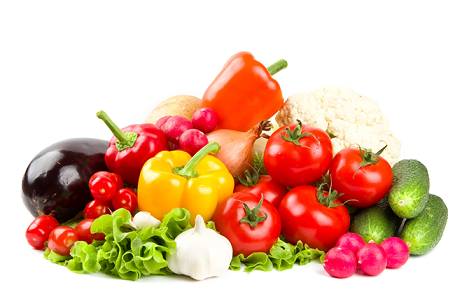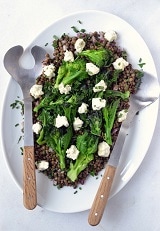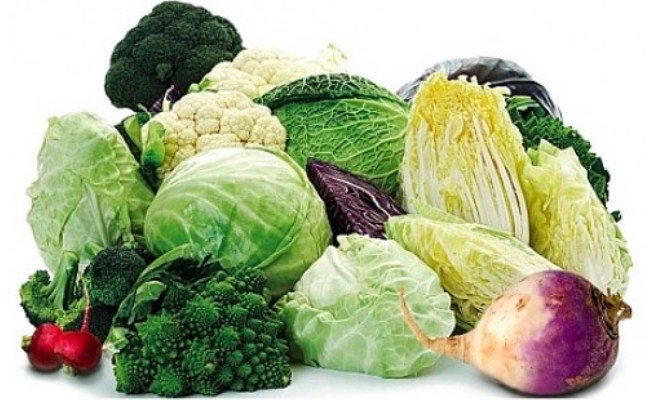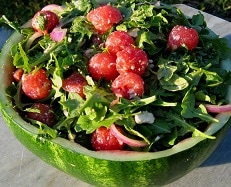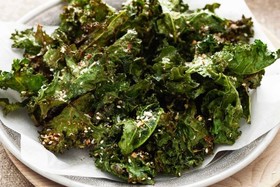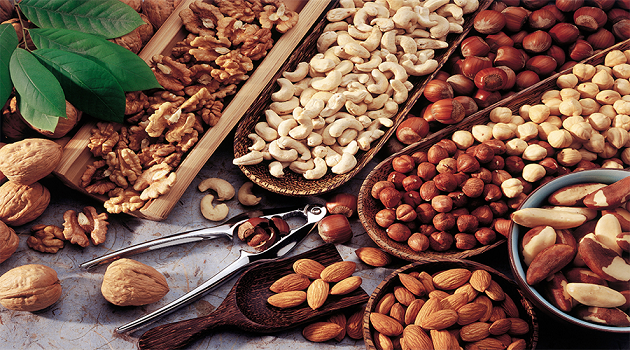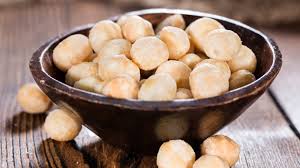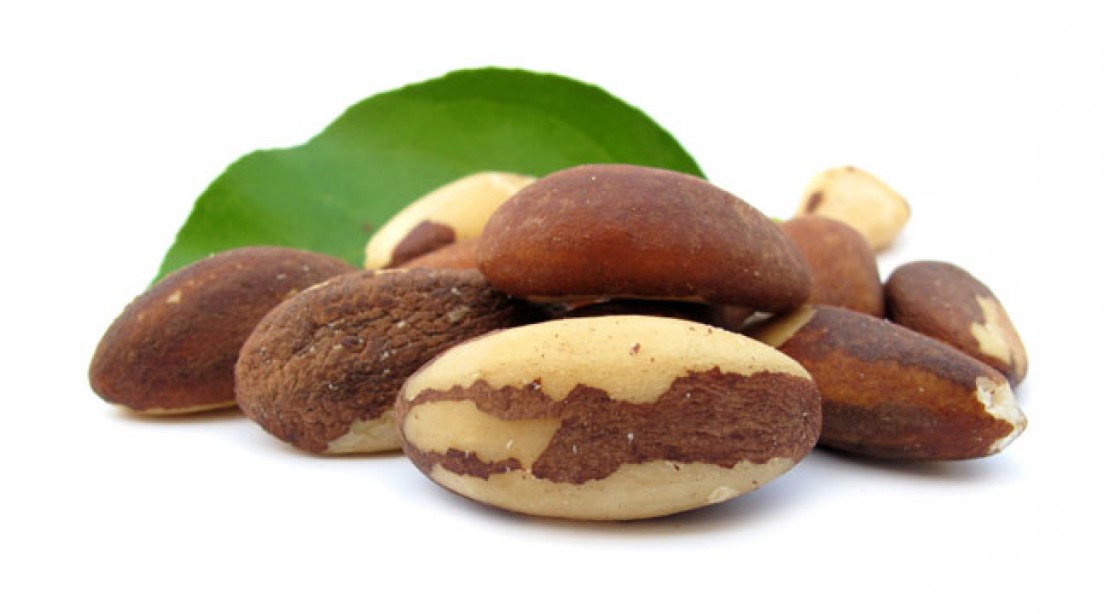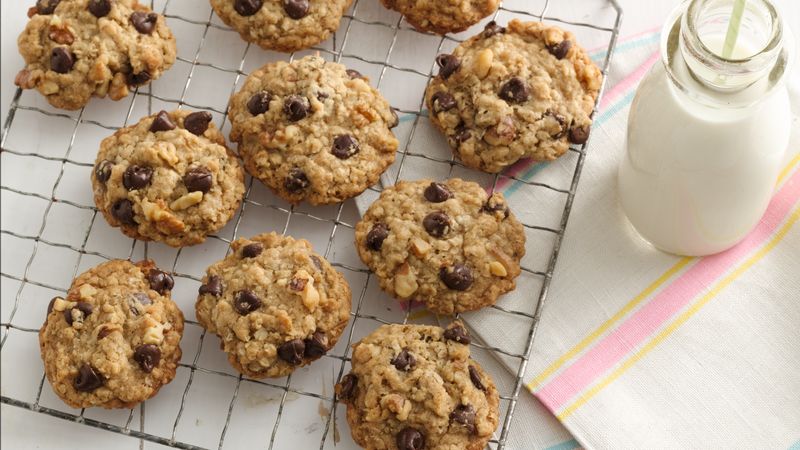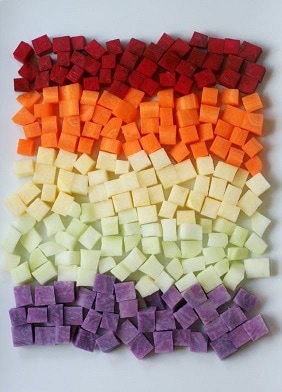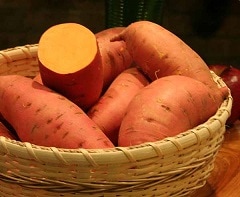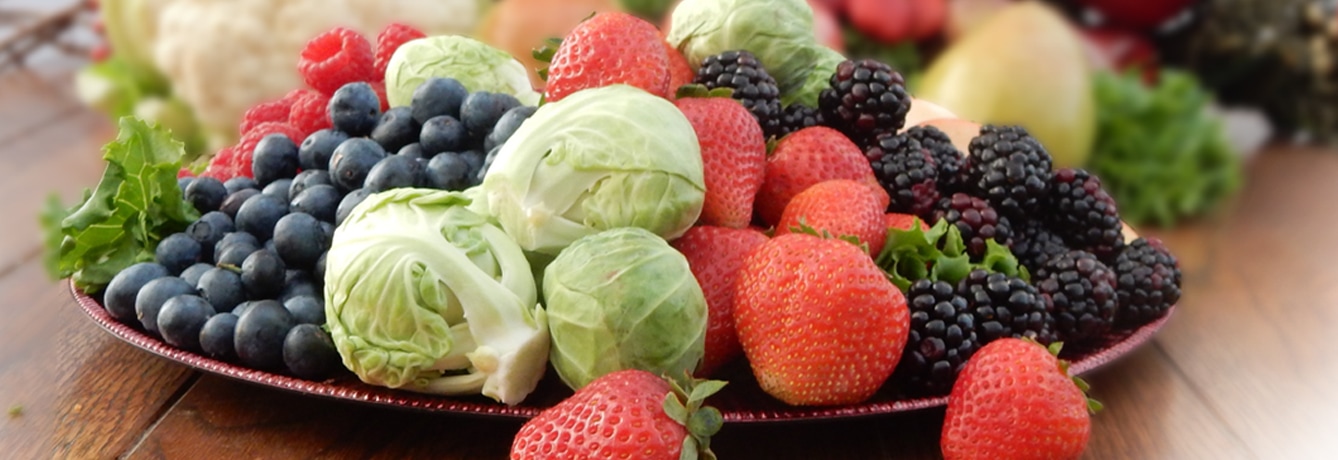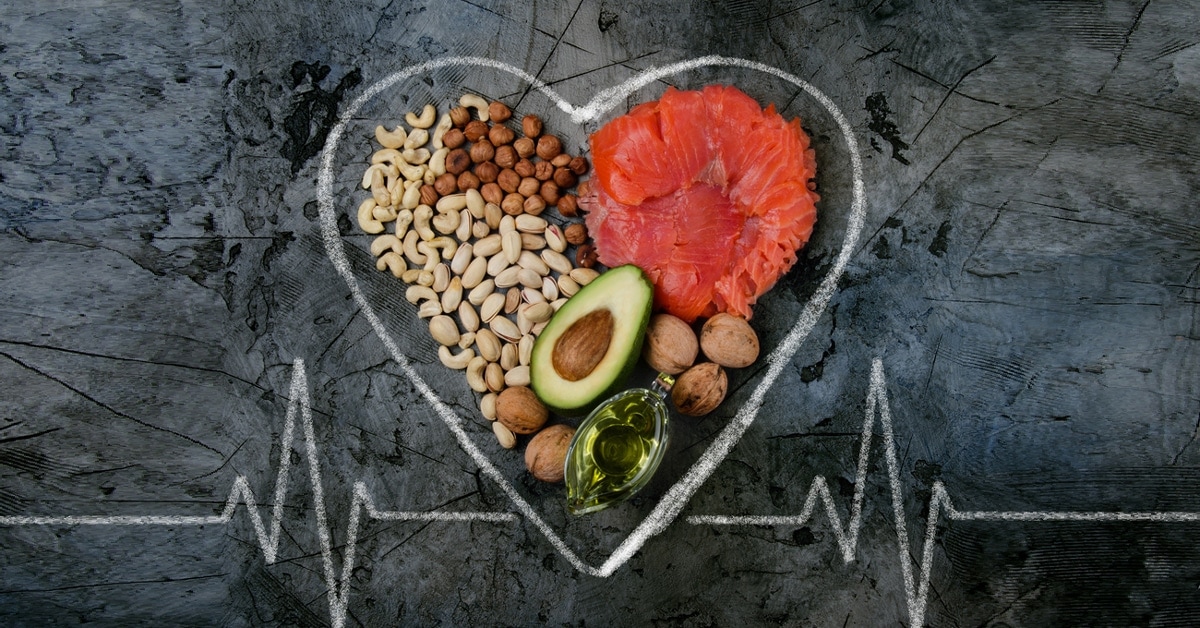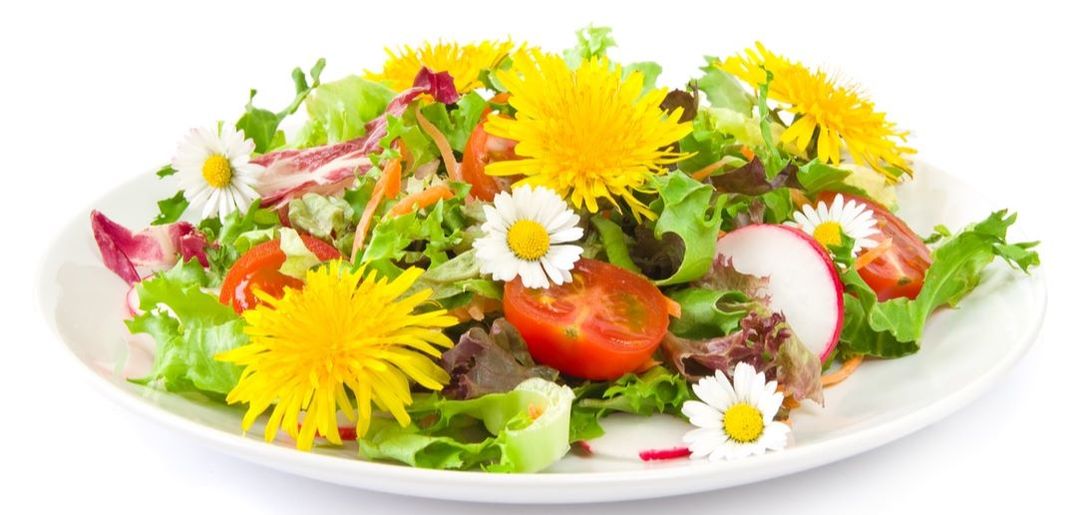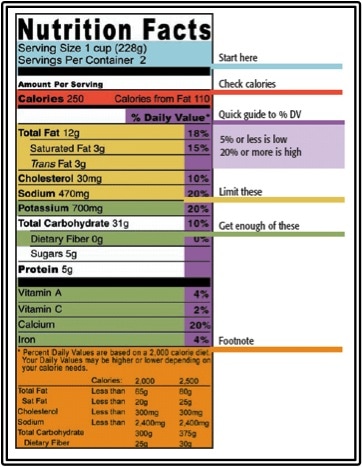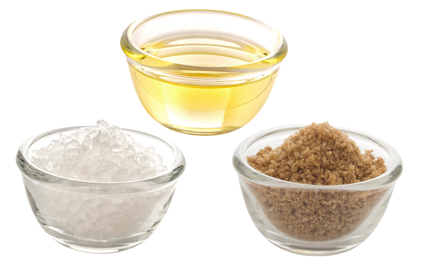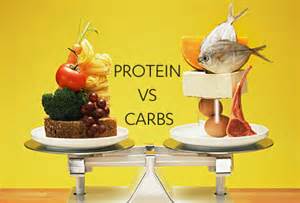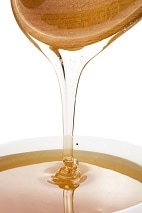|
Scorching summer heat drives people to the beaches to get away from it all. The negative aspects that affect you after a day at the beach are poor nutrition, lack of hydration and fierce sunburn that can take a toll of your health after a relaxing dip in the beach water. Utilize your time at the beach in the best possible way by giving your beach day a healthy makeover. Bring Healthy Snacks Cafes and small eateries in the beach don’t provide healthy options for eating. It is better to bring your own food to save money and eat right. Registered dietitian nutritionists suggest few healthy beach-day eats:
Stock your vehicle with plenty of water. Pack your cooler with ice and water. Refresh yourself with a thermos of cold water and ice with lemon or mint. If you crave for something fizzy, trade soda for calorie-free sparkling water. Maximize Food Safety While a day spent at the beach is relaxing, a spell of food poisoning can spoil everything. Be precautious and carry your beach snacks accordingly, and don’t leave perishable food sitting out for longer than one to two hours. Just before leaving to the beach, wash your cooler and tote thoroughly. Always start with a clean cooler, washing it out with mild soap and water and rinsing thoroughly. Keep reusable bags clean by washing them on a regular basis to stay away from bacteria. Load your cooler with plenty of ice cubes if you have decided to take perishable foods to the beach. Your cooler should maintain food at a temperature of 40°F or lower. Keep a thermometer with you in the cooler and store coolers in the shade, if possible. Follow these do’s and don’t’s while cooking out at the beach:
Certain beaches are not equipped with running tap water. It is crucial to carry your hand sanitizer and use it before and after cooking or eating food. Bring along some empty garbage bags to collect the trash and make sure that you don’t leave any waste on the beach.
Stay hydrated with foods such as fresh fruits and veggies that have ample water content in them. Watermelon or musk melon is a great snack for a summer day at the beach.
A cold beer on a hot day seems tempting, but drink alcohol cautiously and in moderate quantities. Swimming after drinking large quantities of alcohol is dangerous as many studies prove that this kind of an action leads to numerous drowning deaths. Warning signs of dehydration include:
Be happy, healthy and have fun at the beach with the right mix of nutritious snacks, food safety tips and hydrating beverages, all this with a dose of sunscreen.
0 Comments
Kids are on the right track to eating and growing healthy when they follow the recommended diet charts and pediatric counsel for their daily servings. Sadly, today’s generation suffers from “portion distortion”. Let’s get a brief glimpse of some of the definitions related to the eating habits of children. Know your “Serving Size” and “Portion Size” A serving usually adheres to a clear-cut quantity of food or drink expressed using measures such as cups, grams or tablespoons. This is the common term used to denote servings in diet charts (the quantity kids should consume) and the serving size on Nutrition Facts labels, which provide the foundation for rest of the nutrition information on the label. The serving size listed on the Nutrition Facts Label varies from the diet chart recommendations on serving size. Diet chart recommendations are in fact smaller that the Nutrition Facts Label. Nutrition Facts Panel is explained in detail at www.firsteatright.com. A portion generally denotes the quantity of food that ends up on the plate. A portion size is the total amount of food consumed by the kids during breakfast, lunch, dinner or snacks. Portions can be bigger or smaller than the recommended serving size.
Tabulated are some useful tips that would help anyone with correlating the exact portion sizes for the different food groups: Grains Group:
Fruits Group:
Vegetable Group:
Dairy Group:
Protein Foods Group:
Oils Group:
Babies eat whatever their mothers feed them till they feel full. But as they grow up, they acquire the ability to think and start choosing whatever they like. This starts right from the food they eat to the dress they wear. The big problem here is to make our kids choose healthy foods without nagging them constantly. Getting them to eat healthy food is no magic. But that’s not the reason to give up either. Plan every meal of the day, especially the way they are presented. When we are attracted by the look of the food at restaurants why not try doing the same at our home where we take most of our meals? Spot the Right Location Just as location is important to sell a property in real estate business, the same holds good for food choices of children too. Nutrition science professionals propose that healthy foods placed at the right place with the correct lighting can grab the attention of a child. Their research shows that a bowl of attractive fruits under a bright light at school increases fruit sales. Following the same technique of placing colorful fresh fruits in attractive containers would catch your child’s interest at home too. Healthy Foods Everywhere Stockpile the required nutritious ingredients for meals and snacks to prepare healthful foods to your kids. Place healthy foods and remove junk foods from every place your kids’ eyes and hands might wander to. Fill your refrigerators, freezers and cupboards with fresh fruits, vegetables, whole-grain breads, cereals, pasta, eggs, low-fat milk, yogurt and cheese. Make your family aware of these foods in a smart and tempting way. Practicing healthy eating habits together as a family is essential to raise healthy eaters and tips to eat healthy food are available at www.firsteatright.com. Put on your Thinking Caps Shapes often are a big temptation for many kids. Whole-grain wraps cut into smiley shapes instead of the traditional sandwich, a colorful and nutritious smoothie rather than a glass of milk with a fruit or veggie kebabs with sweet or savory yogurt dips are huge attractions among the children.
Spice it Up
Though presenting foods in different shapes is fun, it is not a necessity. The result is to expose the children to a variety of foods and textures that keep their interest lively for healthy foods. Instead of a bland monotone meal of chicken, mashed potatoes, regular pasta and a banana you can decoy your kid with whole-grain pasta, crunchy green beans and melon balls. Kids Follow Suit when Parents Eat Right Children are great imitators of their parents. Instilling healthy eating habits in children is no tough job if you are a healthy eater yourself. If your child sees you with a bowl of cut fruits for snacks or a bowl of colorful veggies along with your lunch, he/she will automatically follow suit. All the food styling and luring is secondary to setting an example practically. A kitchen supply store is sure to help you with every culinary tool required. But a novice home cook is yet to explore his/her kitchenette tool needs. The given below list of kitchen essentials for cooking is sure to act as your first-aid guide to help you prepare healthy and tasty meals at home. Mixing bowls: Be wise to choose the glass or metal mixing bowls in various sizes of your choice. Avoid plastic bowls as they retain odor, are hard to maintain and can go out of shape due to varying temperatures of the ingredients used. High-quality knives: Start with a paring knife, small and medium chef's or Santoku knives and a serrated knife. Don't forget to buy a sharpener. Several cutting boards: Cutting boards can be made of wooden, plastic or bamboo with their sole purpose serving to act as a strong base to cut anything. Select any boards with the intention of maintaining them clean and dry. Have two different boards for meat and produce. Wooden spoons: Keep stock of wooden spoons as they are handy to use on pans and don’t transfer heat, all these advantageous to you at a minimal cost. A small and large whisk: Always update to the latest technology available in any domain. Don’t keep whisking ingredients with a fork when you have an option to use the latest available whisking tools in the market like the large whisk for whisking vinaigrette and dressings and the small whisk for aerated flour and beating eggs. Heat-resistant spatula: Buy a heat-resistant spatula to serve your needs for hot pans while a normal spatula may just serve you to scrape any bowl. Long tongs: Long tongs are a necessity in every kitchen to make hot rotis or to lift and turn any food over heat. Keep your hands safe by using these in the oven. Grater: Start with a basic grater for cheese, garlic, ginger or citrus fruit zest and update yourself to different sized ones once you start full-fledged cooking. Glass measuring cups: Glass measuring cups are simply the best ones for liquid volume measuring as you can clearly see the meniscus. Though glass must be handled with care it will not deform like plastic. Strainer and salad spinner: A strainer or colander is a bowl used to strain off the excess water from any food after washing. This utensil is perfect for draining water off the pasta, fruits, vegetables, lentils and beans. Salad spinners often replace strainers to dry any leafy green vegetable. For exotic salad greens that can be added to your salad, visit the website www.firsteatright.com.
Basic pots and pans: Rather than purchasing an entire set of expensive cookware, try to slowly purchase individual pans that suit your needs and requirements. You will get an idea as you start cooking various dishes. Begin with a pair of large and small sauté, pans, a soup pot, a sauce pan and a Dutch oven or the commonly called ‘French oven’ which can be used on the stove or in an oven. These pans help in preparing healthy and nutritious foods as these utensils require only minimal oil for cooking purpose. Electronic scale: These scales help you with the exact measures as mentioned in cook books and recipes as these guides call for grams instead of cup measures. It aids someone novice to cooking familiarize with portion sizes. Newspapers, books and the web publish flashy articles regarding the advantages of eating “functional foods”. These foods are said to reduce the risk of chronic diseases like cancer and coronary heart disease. Supermarkets sell breakfast cereals, probiotics like yogurt and energy bars with similar health benefits proclaimed on their packaging. What is a functional food and how’s that different from a fortified food? Firstly, all foods which have physiological benefits like proteins that aid in muscle repair, carbohydrates that help in gaining energy and vitamins and minerals to assist in cell function are said to be functional foods. The term ‘functional food’ was first introduced in Japan in the 1980s and refers to processed foods containing ingredients that aid in specific bodily functions in addition to being nutritious. To date, Japan is the only country that has formulated a specific regulatory approval process for functional foods and currently, 100 products are listed under this category. In America, the Institute of Medicine’s Food and Nutrition Board defines functional foods as “any food or food ingredient that may provide a health benefit beyond the traditional nutrients it contains” while the category is not recognized legally. Meanwhile, the Academy of Nutrition and Dietetics defines functional foods as: "whole foods along with fortified, enriched or enhanced foods that have a potentially beneficial effect on health when consumed as part of a varied diet on a regular basis at effective levels based on significant standards of evidence." There are four categories of functional foods:
Food fortification is the process of adding micronutrients (essential trace elements and vitamins) to food. Many products now boast of these added nutrients in them. Such nutrients are said to elevate the nutritional content of a food and are also prescribed as part of a healthy diet plan. Renowned dietitians/nutritionists worldwide suggest the given below fortified foods:
Heart is the most special organ in the human body. It is our duty to maintain the health of our heart. Most of the adults as well as kids consume too much sodium which can lead to high blood pressure resulting in heart disease, stroke and kidney disease. It is shocking to know that an average child consumes more than twice the amount of sodium required by the body daily. Think Out of the Box Think out of the box while cooking. Try to replace salt with every other low-sodium seasoning or spice possible. Opt for fresh lemon or lime juice, fresh herbs or salt-free herb blends and vinegar to enhance the flavour of your favourite dishes while maintaining the nutrient contents. Even with all these substitutes we may be reducing a maximum of 10 percent of our day’s sodium intake, as this is the amount of salt we add during cooking or at the table. The main culprits for increased sodium content in our body are packaged and processed foods which contribute to more than 75 percent of the sodium we eat. Children eat what we cook. If we habituate them to more salt right from childhood they would seek for food with increased salt content as they grow. This will lead to a ‘salt tooth’ which may cause health problems in life later. Hence it is our responsibility to limit salt right from their childhood age by cooking with low-sodium alternatives. Check Nutrition Labels Nutrition facts panel plays a key role in helping to select foods (canned, frozen and packaged) that have reduced salt content in them. This is because the amount of sodium in foods differs brand to brand by hundreds of milligrams. The website www.firsteatright.com contains detailed information on the Nutrition Facts Panel. Opt for High-Potassium and Low-Sodium Foods The foods we eat contain too much of sodium and too little of potassium in our diet. Whole and unprocessed foods are naturally low in sodium and are good diet foods. Fruits and veggies are an excellent source of potassium, a mineral which helps to balance blood pressure, with minimum sodium contained in them. Children below 13 years of age require around 3,000 to 4,500 milligrams of potassium per day while others required 4,700 milligrams daily. Potatoes, tomatoes, spinach, bananas, oranges and raisins are some of the vegetables and fruits which have maximum potassium content in them. Make it a must to eat at least 2 cups of fruits and 2.5 cups of vegetables daily which serves the dual purpose of meeting your daily potassium demands and reducing the intake of sodium-packed processed foods on your plate. Glycemic index is the measure of how quickly the food we eat causes our blood sugar levels to rise. This measure ranks food on a scale of 0 to 100. Foods with a high glycemic index (GI), such as pizza (80) and baked potatoes without the skin (98), cause a rapid rise in blood sugar as they are quickly digested and absorbed. Foods rich in fiber, protein and/or fat have a low GI and are digested and absorbed at a slower rate, causing a slow rise in blood sugar levels. Apples with a GI of 28 and peanuts with a GI of 7 are excellent examples of these. Don’t assume that foods which are low on GI are high on nutrients. You need to choose healthy foods from all five food groups for a balanced and healthy diet. Consuming a diet rich in low-GI food is best suited to achieve and maintain a healthy weight as these foods help to keep us full for longer time periods. Low-GI diets have also been shown to improve insulin resistance and lower glucose, cholesterol and triglyceride levels in people with type 2 diabetes. Type 2 diabetes and foods suitable for people affected by this disease are discussed in detail in the website www.firsteatright.com. It is best suited to consume a low-GI diet except after an intense workout session. After these exercise schedules it is recommended to eat high-GI foods. High-GI foods are rapidly digested and hence, they aid in muscle recovery. An Inexact but Helpful Measure A food’s GI ranking denotes the value accurately only when the food is consumed on an empty stomach without any other type of food. But all of us are aware that this scenario is not practically possible. A pizza might be a stand-alone meal, but how often do we eat a plain potato without anything else? Add a side of broccoli, lean steak and a salad with low-fat dressing which would naturally fulfill your protein, fiber and fat requirements, thereby lowering the glycemic index. The glycemic index is not dependent on the quantity of food we consume. The GI value of a food is determined by giving people a serving of the food that contains 50 grams of carbohydrate minus the fiber, then measuring the effect on their blood glucose levels over the next two hours. Though a serving of 50 grams of carbs in one shot maybe reasonable for a food like rice, which contains 53 grams of carbs per cup, this is impractical for foods like beets. Though beets have a GI ranking of 64, they have just 13 grams of carbs per cup. This means that we need to consume nearly 4 cups of beets for the blood sugar levels to rise. An Alternative to Glycemic Index
Glycemic load (GL) is a formula that corrects for potentially misleading GI by combining portion size and GI into one number. The carbohydrate content of the actual serving is multiplied by the food’s GI, then that number is divided by 100. So for a cup of beets, the GL would be: 13 times 64 = 832 divided by 100 = a GL of 8.3. For reference, a GL having a value greater than 20 is considered high, between 11 and 19 is considered moderate and 10 or less is considered low. In a nutshell: Though glycemic index is not a perfect system, it helps to spot low-glycemic foods that are more nutrient-dense and avoid foods high in refined carbohydrates. Does your family have one of those finicky eaters who convey their disinterest through gestures when a particular food they dislike is served to them??? Rather than following the routine way of dealing, surprise them with this simple question: “How can I make it better for you?” The question, once put forward can work wonders with your children as it makes them feel more involved in planning their meal. This also works as a two-way switch making you feel more relaxed as you now clearly know what your child desires. Choosing the apt words to question your little one is the vital element in bringing about a change for the better. Rather than putting forward a question like “Why don’t you like it?” a positive question allows for constructive problem-solving and progressive solutions. Make It Better Though the question “How can I make that better for you?” may not trigger an instantaneous response from your child, it will set his/her brains ticking. Here are some common complaints and suggested solutions (note that nuts and seeds are choking hazards for children under 4 years):
Caution: Solutions that work today may not work tomorrow. The simple question “How can I make that better for you?” will bring in different answers but you can be sure of getting some answer. Also, if you would like to try healthy and nutritious recipes that would be relished by your child, you can always find them at www.firsteatright.com. The suggestions above can help you avoid annoying mealtimes and make dining an enjoyable experience.
Exotic vegetables like Brussels sprouts, kale and arugula belong to the cruciferous group of veggies and are used for trend-setting vegetable recipes . These vegetables are loaded with nutritional value and help to fight inflammation. ‘Cruciferous’ is an informal classification for members of the mustard family and is derived from the Latin name ‘cruciferae’ meaning ‘cross bearing’ for the reason that the four petals resemble a cross. Vegetables like broccoli, cauliflower, cabbage, kale, bok choy, arugula, Brussels sprouts, collards, watercress and radish are part of the cruciferous family. Though these veggies grow in all different shapes, sizes and colors, they share numerous nutritional benefits. While most of the cruciferous veggies are an excellent source of vitamins and minerals such as folate and vitamin K, dark green cruciferous veggies are rich in vitamins A and C. These crucifers are also rich in phytonutrients which are plant-based compounds that lower inflammation and minimize the risk of developing cancer. Other foods that help to prevent our body from being affected by cancer can be found at www.firsteatright.com. You can eat as much of these veggies as you desire, as they are loaded with fiber and low in calories—a perfect combination to fill your stomach without overeating. Generally, adults should consume at least 2.5 cups of vegetables daily. One cup of broccoli, cauliflower and Brussels sprouts in raw or cooked form is proportionate to a 1-cup vegetable serving. Two cups of raw leafy veggies, such as kale, cabbage and bok choy, are also equivalent to only a 1-cup vegetable serving. These crucifers are recommended as a mandatory part of any diet for weight loss as they are highly nutritious with minimal calories. All these details would surely tempt you to try these healthy crucifers. The tips given below will ease your job even more to load your body with the essential vitamins and minerals in an easy and delightful way. Cauliflower There is more to cauliflower than just steaming it. You can roast florets or “steaks” of cauliflower to enjoy its pleasant flavor. High-calorie cream sauce can be easily substituted with pureed cauliflower. Think and experiment on what would work out for you. You can mash cauliflower into a pizza crust, grate into a substitute for rice or prepare a yummy dish by pickling for a low-calorie salty snack. Brussels Sprouts
Brussels sprouts practically beg to be in the oven. For a melt-in-your-mouth side, roast and toss with something sweet, such as dried fruit or maple syrup, as well as something savory — anything from Parmesan cheese to diced anchovies. Kale Kale is simply the best green for salads. Take care to remove the tough stem of the kale, slicing them into thin strips and mixing them with toppings, dressings or anything of your choice. The finest part is that kale can be stored for quite some time and will not wither away. To minimize the bitterness of kale add roasted carrots, diced apples or dried fruits as these ingredients will enhance the sweetness of the dish. Lip-smacking smoothies and crispy chips are other innovative ways of using kale. Arugula Planting an arugula is very easy and can be done quickly. Toss it into a salad, puree it into a pesto or sprinkle onto whole-wheat pizzas after they are popped out of the oven. Fresh arugula paired with feta cheese, cubed watermelon and a balsamic dressing is a sure way to satisfy your taste buds. Coffee, tea, sodas and energy drinks are all sources of caffeine, a bitter substance which stimulates the central nervous system. The effect of caffeine depends on the quantity consumed. It has a positive effect making any individual at any age feel more alert, energetic or awake when consumed in small doses while over consumption of the substance leads to irritability, impaired calcium metabolism, anxiety, rapid heart rate, elevated blood pressures and sleep problems. Many children, adolescents and young adults have increased caffeine intake with the United States leading the charts with approximately 75 percent of kids in this age group habituated to caffeine consumption. Over-caffeinated kids sleep for the least number of hours. Parents indulge in rendering excessive amounts of caffeine to children as they are unaware of the high caffeine concentration in beverages such as teas and colas, these drinks being very commonly consumed across the population. These drinks do not contribute as healthy diet foods and should be substituted with more nutritious choices. Check out www.firsteatright.com for healthy alternatives to caffeine drinks. Pediatric specialists report that some teens find caffeine aiding them with better performance in school and exams. The more the academic burden for your kid, the more he/she may increase the intake of caffeine-containing foods or beverages for improved focus and late-night studies. But this leads to irregular sleep patterns in these children as they drink caffeine to fight off sleep and later face trouble falling asleep again after completing their study chores. How Much is Too Much? Though the FDA does not have a set of guidelines for safe caffeine consumption, the Canadian government recommends a daily caffeine intake of no more than 2.5 mg per kg of body weight. Based on this value, it recommends the daily caffeine limits for children in different age groups:
Caffeine Concentration in Various Foods and Beverages
Food Caffeine (mg) Coffee, 355 ml, coffee shop variety 260 Energy drinks, 236 ml 47–163 Espresso, 29.5 ml 64 Candy, semi-sweet chocolate, 29.5 ml* 18 Hot chocolate, 355 ml, coffee shop variety* 20 Hot tea, 1 cup 48 Cola, 355 ml 48 *Chocolate and chocolate-containing foods are not a major source of caffeine. Vital Role of Nut Meats in Health Benefits and Nutritious DishesNuts are an integral part of our daily diet plans. From being a rarely consumed commodity, nuts have occupied a prominent place in our kitchenette. Tree nuts, plant-based proteins, are rich in fiber, vitamins, minerals and antioxidants. These nuts are a wealthy source of heart-healthy monounsaturated and polyunsaturated fats and help to lower cholesterol levels. There are various other healthy diet foods that contain heart-healthy fats and their details can be fetched from the link www.firsteatright.com. The U.S. Food and Drug Administration states that consuming 42.5 grams per day of most nuts as part of a diet low in saturated fat and cholesterol helps to reduce the risk of heart disease. Almonds, hazelnuts, peanuts, pecans, some pine nuts, pistachios and walnuts are included in this category as these nuts contain less than 4 grams of saturated fat for a 50-gram serving. Nuts are excellent snacking options for weight management, when consumed with keeping the portion size in mind. Nuts are both healthy and calorie-dense. As 28 grams of nuts contain anywhere between 160 calories to 200 calories, these should be used as a replacement for other foods, particularly those high in saturated fat. For optimal result, you can consume between 28 grams to 56 grams a day. We can simply categorize nuts as a single category with its benefits, but each nut is unique by itself and has varying nutrients, texture, taste, origin and culinary use. Given below is a concise summary of nut meats from a world renowned magazine. Pistachios (Approximately 49 nuts per 28-gram serving) Pistachios are packed with antioxidants, including lutein and zeaxanthin. Decrease your consumption rate by eating in-shell. This bright colored nut, a native to Middle East, makes an excellent addition to salads, grain dishes and is a great coating for meats. Almonds (Approximately 23 nuts per 28-gram serving) Almonds are rich in vitamin E, magnesium, calcium and folate. Almonds can be consumed in any form — whole, sliced, blanched to remove skins and as a flour, paste or butter. Though California is the major contributor of almonds, providing about 80 percent of world’s supply, almonds are relished in savory and sweet dishes all over the world. Cashews (Approximately 18 nuts per 28-gram serving) Cashews are loaded with copper and magnesium. These are soft in consistency with a sweet flavor. Cashews have a South American origin, but were introduced by colonists to Africa and India. These are mostly a snacking option and can be eaten in raw or roasted form. Cashews occupy a predominant place in Asian recipes and are used for making rich, creamy nut butter or vegan cheese. Macadamias (Approximately 10-12 nuts per 28-gram serving) Macadamias, rich in magnesium, are from the subtropical rain forests of Australia. This nut is high in fat, with the positive part being that 17 of the 22 grams are monounsaturated. This nut has a buttery taste and a smooth texture which makes it a great snack. Macadamias can be eaten raw, roasted, baked into cookies or coated with chocolate. Brazil Nuts
(Approximately 6 nuts per 28-gram serving) Brazil nuts grow wild on trees in Amazon rain forests. Being the largest nut eaten widely, these are rich in polyunsaturated and monounsaturated fats with more that 100 percent of the daily dose of antioxidant selenium contained in them. They have a rich and creamy texture which makes them a great snacking option, in raw or roasted forms, and are also used in confections. Pine Nuts (Approximately 167 nuts per 28-gram serving) Pine nuts are soft in texture and can be found inside the cone of several varieties of pine trees. These nuts are packed with vitamin E and phosphorus. Italian cuisine, especially pesto, makes utmost use of pine nuts. Their light and delicate flavor goes well with pastas, salads, sautés, breads and other baked goods. Hazelnuts (Approximately 21 nuts per 28-gram serving) Hazelnuts, or filberts, are great sources of vitamin, copper, manganese and monounsaturated fats. Hazelnuts are available in various forms such as in-shell, whole, diced, sliced and are used in gluten-free baking. Chocolates taste yummy when paired with this nut. These nuts go well with savory, citrus and sweet flavors and can be used in confections. Pecans (Approximately 19 halves per 28-gram serving) Pecans are abundant in antioxidants and heart-healthy monounsaturated fats. Sweet, mellow flavor and meaty texture are characteristic of pecans which go well with salads, sweets such as pralines and pecan pie and serve as an excellent coating for fish. Walnuts (Approximately 14 halves per 28-gram serving) Walnuts are predominantly used in Mediterranean regions as they play a vital role in maintaining the health of people used to this style of eating. Walnuts are full of antioxidants and alpha-linolenic acid (ALA), the plant-based form of omega-3. Walnuts can be seasoned sweet or hot to give an enticing flavor while walnut oils can be used in dressings and sautés. Today’s children are reluctant to drink milk. You may not even remember the last time your child came to you asking for a glass of milk. Analysis proves that less than 50 percent of children between 2 to 8 years and only 25 percent of kids aged between 9 to 19 years drink the recommended amount of milk daily. Milk and dairy products are the primary source of calcium. Calcium is essential to build strong bones, help muscles contract and transmit nerve impulses. Dietary associations have reported that children who miss out on their required dairy consumption rates barely meet the required calcium levels. Individuals allergic/not able to consume dairy can look for dairy alternatives at www.firsteatright.com. Milk is the fountainhead of high-quality protein with every glass providing more protein than a large egg. Other than calcium, milk supplies us with eight other essential nutrients including vitamin D and potassium, which are deficient in many kids. The optimal milk intake levels include:
Be sure to choose low-fat options like 1 percent or non-fat milk. These provide all the nutrients of 2% or whole milk with a fraction of the total and saturated fat which is healthier for the kid’s heart and lower in calories. Sounds like a tall order? Try these tips:
Seeing your baby eat his/her first few morsels of solid food is exciting and intimidating. Most babies start feeding on solids between their fourth and sixth month, gradually increasing their portion size. At around 9 to 11 months, infants reduce their breast-feeding dramatically as they start getting their nutrition and calories from solid foods. During this transition phase, it is ideal that parents and caretakers pump in extra effort to meet the nutritional demands of children critical for their growth and development. This may also convey the use of carefully chosen supplements in some kids to fill their nutritional gaps. A pediatrician/registered dietitian & nutritionist can help you prepare a healthy diet chart for your baby to fill his/her nutritional gap in most scenarios. Iron Babies are born with capacious iron content which would last for about 4 to 6 months. Pediatricians suggest starting the baby on iron supplements from their fourth month, if the full-term infant is exclusively breast-fed. It is better to consult a pediatrician to verify the need of iron supplement for your infant. This is because, premature children and low-birth weight infants may have reduced iron stores and your doctor may suggest iron supplements until your child’s first birthday. Formula-fed babies rarely require iron supplements as the infant formula is usually iron-fortified. When the infant starts to feed more often on solid foods, feeding them iron-rich foods such as iron-fortified cereal, meat or beans at least twice a day will fulfill their iron needs. Pediatricians recommend iron supplements to babies over 6 months who breast-feed and don’t eat iron-containing foods.
Fluoride It is better to know the level of fluoride in your local water supply before putting your baby on fluoride supplements, which are needed to prevent cavities. It is advised to consult your pediatrician first, as these supplements are available only by prescription.
In any case, remember to consult with your pediatrician before starting your baby on any supplements. Not all infants need supplements when starting solids. Make your baby get used to a variety of foods to meet his/her nutritional demands.
Every individual has to question himself/herself on the nutrients consumed for his/her eye health to ward off cataracts, macular degeneration, glaucoma and other sight woes. Read further for an in-depth insight on the most recommended foods for healthy eyes. Kale: Miracle Solution for Clear Vision Green leafy vegetables such as kale and spinach contain a good dose of carotenoids such as lutein (also known as the eye vitamin) and zeaxanthin which are helpful in preventing age-related eye diseases, such as cataracts and macular degeneration, and aid to reduce disability from glare. Dark green leafy vegetables such as collard greens, turnip greens, spinach, broccoli, peas, kiwi, red grapes, yellow squash, oranges, corn, mangoes and honeydew melon are foods rich in these nutrients. Eating these foods with a drop of olive oil rich in fat content is essential for the body to absorb lutein and zeaxanthin. Vitamin C and beta carotene are other nutrients present in kale which help to protect eyesight. Sweet Potatoes: Healthy Tasty Veggie Treats These sweet-tasting tuberous roots are rich in beta carotene which prevents the occurrence of macular degeneration. Your body converts beta carotene to vitamin A. These nutrients together reduce the risk of eye infection while the vitamin independently aids in arresting dry eyes and night blindness. Other foods loaded with beta carotene are carrots, butternut squash, spinach and collard greens. Vitamin A can be found in plenty in liver, milk and eggs.
Strawberries: Help You "C" Better
Red, plump and heart-shaped strawberries are not only simply popular, but they also pack a healthy punch for your eyes. They are nutrient-rich and packed with antioxidants like vitamin C which help to lower the occurrence of cataracts. Vitamin C-enriched foods include bell peppers, broccoli, citrus fruits, tomatoes, peas, papayas and cantaloupe which must be a part of your daily dietary intake. Salmon: Help you Stay Away from Dry Eyes Good sources of omega-3 fatty acids (good cholesterol) include cold-water fish such as salmons, sardines, herring and cod (can be consumed twice or thrice a week) which help stimulate aqueous tear secretion, thus, relieving dry eyes. Walnuts containing vitamin E (aids in healthy eyes), flax and chia seeds are all major contributing sources of good cholesterol in our system. Eating salmons, which are rich in vitamin D, slows macular degeneration. Sardines, mackerel, milk and orange juice are few other reliable sources of vitamin D. Green Tea: Antioxidant Powerhouse Green tea “catechins” having anti-inflammatory property are among a number of antioxidants capable of protecting the eye from cataract and macular degeneration. Catechins are bountiful in red wine, chocolate, berries and apples. Black tea, a buddy of the green tea, is also rich in catechins, but in lower quantity. Inflammation is the body’s way of healing itself when injured or exposed to any harmful substance. Its use is evident when the skin heals automatically after a cut or a new skin forms to replace the worn out one. Inflammation is a protective process which you are more familiar with than you assume but this is not always beneficial. Chronic inflammation is the result of attack of the immune system on the body’s healthy cells leading to autoimmune diseases such as rheumatoid arthritis, states of immune deficiency including Crohn’s disease or skin conditions including psoriasis. Lurking chronic inflammation may also play a role in heart disease, diabetes and Alzheimer’s disease. There is limited knowledge on the impact of certain foods on inflammation in the body. Proof exists that some food types can suppress inflammation while the quantity of food needed and the frequency during which these foods are to be consumed is unclear. Research proves the promising benefits of foods such as fatty fish, berries and tart cherry juice. Be cautious of false promotions and advertisements on anti-inflammatory miracles. Nutrition science professionals uphold their view on overall good nutrition to promote the body’s immune system and provide antioxidants to reduce inflammatory stress. Get in touch with a nutritionist/dietitian at the website www.firsteatright.com, who can help you with choosing foods that can reduce inflammation and elevate immune function for your body type. Fats can be healthy or unhealthy depending on the type of food taken. Omega-3 and omega-6 fatty acids are healthy fats that help to regulate membrane function and reduce inflammation. You can include foods made of these fats in a healthy diet plan. Avoid fats such as saturated fats and trans fat that increase the inflammatory process. Saturated fats are usually found in foods such as meats, butter, cream sauces and fried foods and trans fat is found in many processed foods. Try out multiple foods and varieties instead of focusing on one specific so-called ‘superfood’.
Inflammation depends on the diet you consume, the quality and duration of your sleep along with other lifestyle factors.
We can summarize clearly that chronic inflammation can be avoided by following a healthy lifestyle that includes proper diet, a healthy weight, adequate sleep and regular physical activity. Weeds (actually wild greens) once denounced by many gardeners is now considered gourmet. Dandelions, lambsquarters and nettles are cropping up in recipes for dishes, soups and sides, restaurant menus and at farmer markets. Wild greens were commonly eaten by people in rural areas, but have now caught the attention of chefs and individuals looking out for locally grown produce. These edible greens are tasty, low in calories, diet foods for weight loss, rich in disease-fighting phytochemicals and packed with vitamins and other nutrients, depending on the type of plant. They also have the natural systems to grow strong in any kind of an environment. Wild greens are multifaceted — they can be sautéed in olive oil, taste great in soups and casseroles and delicious when tossed raw into salads and piled on sandwiches. Nutritionists caution against the overpowering flavour of these greens. Hence it is recommended to use them sparingly until their reaction on various foods is known completely. Registered dietitians caution against getting yourself involved in picking edible greens on your own, unless you are versatile at it, as some lookalikes can be harmful or could have been treated with pesticides. The best option is to purchase them at a supermarket or at a farmer’s place. To get in touch with a registered dietitian please visit www.firsteatright.com. Given here are few common edible plants and ways to add them to a healthy diet.
Dandelion Dandelion weeds are a cook’s pride and an owners distaste. Again here, you can consume the roots, stems, leaves and even flowers of this common weed. Dandelion enthusiasts even batter and fry the flowers to make fritters or dry roast and grind the roots for a coffee substitute. These weeds can also be used in salads and serve as an ingredient for making wine. Each cup of cooked dandelion supplies us with 150 milligrams of calcium, almost 15% of our daily needs, and is an excellent source of vitamins A and C. Amaranth Dietitians love this weed for the minimum calories contained in each cup. One cup of cooked amaranth consists of 3 milligrams of iron, 275 milligrams of calcium, 850 milligrams of potassium and almost 3 grams of protein — all this just for 28 calories. Leaves and stem of amaranth can be eaten raw or can be cooked. Nettles Handle nettles with care as the raw leaves, which cannot be consumed as such, can sting your skin. A cup of cooked nettles boasts of 6 grams of fibre, 430 milligrams of calcium, is a good source of magnesium and contains some iron and potassium. Purslane This super-hardy weed can be grown anywhere and everywhere possible, right from the garden to the gravel driveway, and is an owner’s displeasure. Whatever it is, this weed is packed with vitamins A and C, is an excellent source of potassium and contains a little magnesium, calcium, folate and iron — all for just 20 calories in one cup of cooked purslane. The entire plant, including its leaves, stems and flowers, is edible and tastes similar to spinach or watercress. Sorrel Sour, lemony sorrel is rich in vitamins C and A, is a good source of iron and contains potassium and magnesium as well. The young leaves are best suited for salad and the older, large leaves can be used for soups and stews. A word of caution: Wild greens have ample vitamin K in them. If you are used to consuming anticoagulant medication (blood-thinning drug) please take care to eat moderate amounts of foods rich in vitamin K. Too much can lead to rapid blood clot. Consult your doctor or an RDN for further clarification.
Percent Daily Values can be your Best Guide Use percent Daily Values (DV) to help evaluate how a food type fits into your daily meal plan.
The High and Low of Daily Values
Minimalize your Intake of the Three ‘S’ Ingredients Minimalize your risk for chronic diseases with eating negligible amounts of saturated fat, added sugars and sodium.
Pick Foods Rich in Vitamins, Minerals and Fibre
Additional Nutrients Additional to knowing about calories you should also be aware of the other nutrients on the Nutrition Facts Panel:
Quick Scan the Ingredient List
Foods made from more than one ingredient must have an ingredient list on the label. Ingredients are always listed in descending order by weight starting with the ones having the highest calories or grams. This is helpful for those with food sensitivities, for those who wish to avoid pork or shellfish, for people who wish to limit added sugars or for vegetarian people. Think Wise and Eat Right at SchoolChildren consider parents as their role model for every single activity, with food choices being no exception. But this stops with the family environment at home. At school, kids are subjected to peer pressure which drives them to make faulty food choices sometimes. It is in the hands of parents to encourage kids to make smart choices by serving them quality breakfast at home, packing healthy lunches and snacks and guiding them to make the right food choices at school. Parents need not shoulder this responsibility in a single-handed manner as many schools have started developing wellness policies to encourage good nutrition practices. Schools have an RDN appointed for classrooms where children can interact with the nutritionist and fine tune their eating habits and meal schedules. Such interactions improve the food choices of children and instil the message that healthy eating is a lifelong journey. Break the Fast with a Hearty Breakfast Research proves that breakfast is the most important meal of the day. Break your overnight fast with a balanced meal to notice positive changes in overall health and well-being, especially in children and teens. Firstly, avoid skipping breakfast at any cost. Remember that your child’s brain and body suffers all day long with decreased efficiency in performance when he/she avoids eating breakfast. Feed your kids a power-packed breakfast which will improve performance and attitude towards studies at school along with a healthy weight gain. Munch a Hearty Lunch Though breakfast is claimed to be the most critical meal of the day, lunch is also vital to maintain a child’s overall health and performance at school.
Snack Wisely
Most children tend to snack on junk food after school hours. Make your children stay away from this unhealthy eating habit by helping them choose naturally nutrient-rich and fat-free fruits and vegetables. These foods help to bridge the nutrient gaps without adding extra calories. Consuming more fruits and vegetables is a wise choice for both adults as well as children. |
AVOID FRAUD. EAT SMART.+91 7846 800 800
AuthorDietitian & Nutritionist Dr. Nafeesa Imteyaz. Archives
July 2024
Categories
All
Dr. Nafeesa's Blog @blogspot |
- Home
- Written Testimonials
- Consult
- Clinics
- Blogs
-
Diet & Nutrition
- Diabetes Reversal
- IVF IUI not needed for PCOS PCOD Infertility
-
Medical Nutrition
>
-
Disease & Conditions
>
- Infertility | PCOS
- Diabetes Mellitus
- Cholesterol
- Hypothyroid
- Kidney Problems
- Hypertension
- Cardiovascular Diseases
- Liver Diseases
- Gastro intestinal disorder
- Cancer
- Metabolic Disorders
- Orthopedic Disorders
- Eating Disorders
- Dietary Recall
- Weight Record Filled By Clients
- Online Payment Transaction Details
- Online Clients Weight Check Form
- Our Program Package Service Charges
- Weight Record 2017 Clients
- Measurements sent by Clients
- Terms & Conditions Of Payment
- Thanks. Your Form is Submitted
- Video Testimonials
- Lifestyle & Wellness
- Lifestyle & Wellness Blog
- Allergy & Intolerance
- Weight Loss / Gain
- Weight Loss / Slimming Blog
-
Disease & Conditions
>
- Life Cycle Nutrition >
- Sports Nutrition >
- Integrity in Nutrition
- Knowledge Centre
© COPYRIGHT 2022. ALL RIGHTS RESERVED. FRST HEALTHCARE PVT LTD.
Dr. Nafeesa Imteyaz of First Eat Right clinic, is the Best Dietitian Nutritionist in Bangalore. Best Dietitian Nutritionist in Pune. Best Dietitian Nutritionist in Hyderabad. Best Dietitian Nutritionist in Chennai. Best Dietitian Nutritionist in Mumbai. Best Dietitian Nutritionist in Delhi. Best Dietitian Nutritionist in Kolkata.




